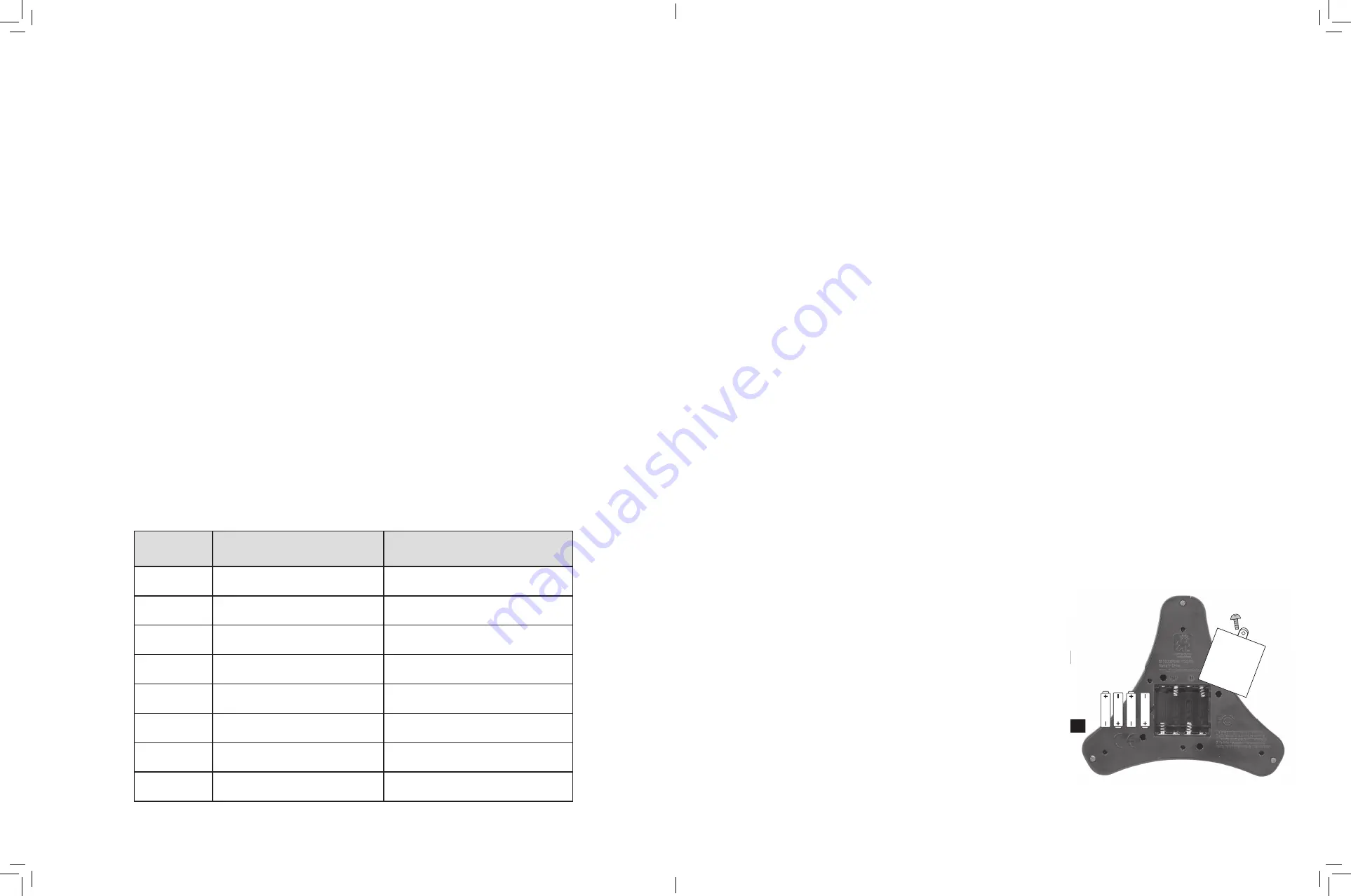
7
This activity works best outdoors, in a gym, or long hallway.
1.
Prepare signs for the sun and planets.
2.
Remove the planet rods from the central tower in the Motorised Solar System model.
Assign each planet to a student.
3.
Tell students that they will be modeling astronomical units by taking steps, using the
scale 1 step = 1 AU.
4.
Set the “sun” on the ground at a designated starting point.
5.
Then, have each “planet” refer to the chart and take the appropriate number of steps away from the sun.
Have students place their planet rods on the ground, in order, in a line from the sun. Encourage students
to take big steps to make room for the planets between the sun and Earth. (A “step” should be at least 2
feet in length.)
6.
Once all the planets are in place, have students notice how far they are standing relative to one another.
They should be able to see that the inner planets are very close together while Neptune is “way out
there.”
For More Information About the Solar System
Battery Installation
1. Use a screwdriver to carefully open the battery compartment on the bottom of the tower.
2.
Install four AA batteries as shown in the diagram. Batteries must be installed with the correct polarity.
•
Only use batteries of the same or equivalent type.
•
Alkaline batteries are preferable.
•
Do not mix old and new batteries.
•
Do not mix different types of batteries: alkaline, standard
(carbon-zinc), or rechargeable (nickel-cadmium) batteries.
•
The supply terminals must not be short-circuited.
•
Do not recharge non-rechargeable batteries.
•
Remove rechargeable batteries from the toy before charging.
•
Only charge rechargeable batteries under adult supervision.
•
Remove exhausted batteries from the unit.
3.
Secure the compartment door.
4.
To prevent battery corrosion, it is recommended that the batteries
be removed from the unit if it is not in use for two weeks.
Cleaning Instructions
1.
Clean the product with a dry or damp cloth.
2.
Do not immerse or spray water or other liquids on the product.
https://www.nasa.gov/
https://airandspace.si.edu/exhibitions/exploring-the-planets/online/
https://solarsystem.nasa.gov/planets/solarsystem/
NASA’s informative website with links for students
and educators
The Smithsonian’s National Air and Space
Museum’s “Exploring the Planets” website
NASA’s real-time encyclopedia of up-to-date planet
and mission information from robotic explorations
of the solar system
6
If You Have a Classroom or Large Group of Kids
Model Planetary Motion
Have students “act out” the movement of the solar system. This activity works best outdoors, in a paved area with
plenty of space.
•
Before the activity, make nine signs, one for the sun and one for each planet. Write each planet’s name and
symbol on a large card or on a sheet of paper. Refer to the Planetary Features Chart on page 4. (The sun’s
symbol is located on the sun sphere.)
•
Begin the activity by drawing a circle about two feet (0.6 meters) in diameter on the pavement with chalk. This
circle will be your sun’s position.
•
Next, draw another circle surrounding it. Draw seven more circles, each encircling the previous one. These
circles will represent the orbits of the planets. Space the circles widely enough so that students walking along
the orbits will not bump into each other.
•
Choose students to enact the roles of the sun and the planets. Pass out the cards. The “sun” should stand in
the central circle. Each “planet” will walk along its orbital path (counterclockwise) around the sun.
•
Here’s the tricky part: The planets and the sun rotate on their axes. They all spin counterclockwise, except
for Venus and Uranus, which spin clockwise. The students portraying Venus and Uranus should spin to
the right, while the other students spin to the left. Uranus actually spins on its side, but that will be hard
to model!
•
Tell your “planets” to spin slowly or they’ll dizzily spin out of orbit! In reality, the planets never stop
moving, but ask your “planets” to rest if they get dizzy.
Model Relative Distances
This activity will help students comprehend the vastness of the solar system by modeling the distance between
the planets. Tell students that astronomers use the astronomical unit (AU) to represent the distance between
the Earth and the sun—149,597,870,700 meters to be exact, about 150 million kilometers, or 93 million miles. The
chart below shows the distance between each planet and the sun, in astronomical units.
Planet
Distance from Sun in
Astronomical Units (AU)
Approximate Distance
Mercury
0.39
26 million miles (58 million km)
Venus
0.72
67 million miles (108 million km)
Earth
1
150 million miles (93 million km)
Mars
1.52
142 million miles (228 million km)
Jupiter
5.2
484 million miles (778 million km)
Saturn
9.5
886 million miles (1.4 billion km)
Uranus
19.19
1.8 billion miles (2.9 billion km)
Neptune
30.07
2.8 billion miles (4.5 billion km)


















